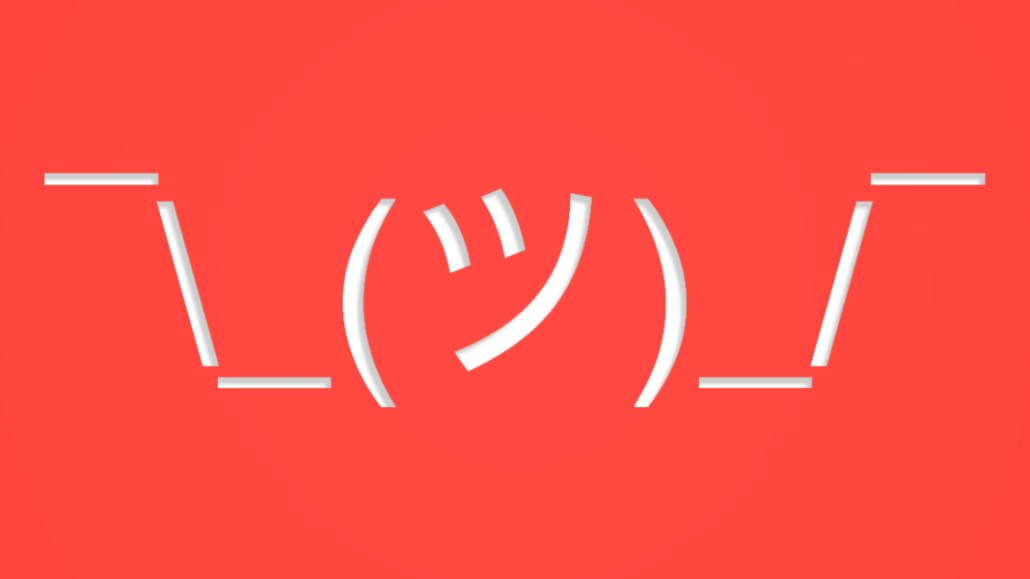Save 50% on a 3-month Digiday+ membership. Ends Dec 5.
‘It’s so frustrating’: YouTube’s top creators have gripes but few better options

Digital video creators’ frustrations with YouTube over their videos being demonetized and not always reaching their audiences has created an opening for competing platforms like Facebook and Instagram to poach them. Those rival platforms may miss the opportunity unless they put up more money, though.
With 8.8 million subscribers to his main YouTube channel, lifestyle vlogger Joey Graceffa has been able to make a living from the platform. YouTube also financed three seasons of his original show, “Escape the Night,” which premiered its third season on YouTube’s subscription-only tier, YouTube Premium, on June 21. But YouTube’s constant algorithm changes can lead to lower view counts for Graceffa’s videos, sometimes his videos don’t appear in his subscribers’ feeds, and YouTube doesn’t communicate enough with its top creators, he said.
Graceffa isn’t alone in his gripes. “It’s so frustrating,” said Cody Ko, a comedian with 1.1 million subscribers on YouTube. Recently, Ko has been running up against YouTube’s crackdown on running ads on videos considered unsafe for advertisers. YouTube would initially run ads against his videos, then yank them for reasons unclear to Ko, who said he filled out all the video-related information to help YouTube’s automated system understand the video’s content.
“I didn’t even have the chance to try and change the video [to make it more compliant with YouTube’s standards], but then all of a sudden the monetization will come back an hour later,” he said. “That’s very demotivating.”
YouTube has more competition for creators than ever. Facebook and Facebook-owned Instagram, in particular, made two moves last week to each make more direct runs at YouTube. Facebook opened up its video section Watch to videos from any page, including creators’. Instagram released IGTV, where users can post videos up to an hour long. And Amazon’s Twitch appears to be ramping up its creator charm offensive.
Facebook does let some creators make money by attaching pre-roll and mid-rolls ads to their videos. Digital video creator Nuseir Yassin said he expects to make more than $300,000 this year in this way on his Facebook Watch show, “Nas Daily.” Twitter and Twitch also share ad revenue this way, and Snapchat revealed last week that it plans to start doing the same. Instagram doesn’t share ad revenue with creators, but lets them publish sponsored posts and keep all the money.
But while 1.45 billion people use Facebook every day, the platform does not especially resonate with YouTube’s core audience of 20-somethings and younger. For a video to succeed on Facebook, “you’ve gotta get 40-year-olds to share it,” said Ko. Twitter’s advertising program is “not at the level of what YouTube is offering,” said Graceffa. Twitch, meanwhile, is still considered a livestreaming platform for gaming creators, and Snapchat’s advertising program for creators is still in the experimental stage.
Ad position: web_incontent_pos1
Instagram’s audience is closer to YouTube’s than Facebook’s is. However, until Instagram starts paying creators to post to IGTV or letting them monetize those videos through ads, creators are unlikely to make videos for it.
Other creators are willing to overlook the lack of financial incentive, but only so much. Lifestyle vlogger Remi Cruz, whose YouTube channel counts 2.3 million subscribers, plans to post videos to IGTV, but only teaser videos that link to the full version on her YouTube channel. “Since I can’t monetize on it and this is my job, right now it’s not a huge priority for me,” said Cruz.
On the flip side, since creators can still make money on YouTube, they don’t plan on going anywhere. Creators like Cruz, Ko and Graceffa are often one-person operations, unlike major media companies that can afford to experiment. “While there is a lot of negative, the positive outweighs that with what they do offer,” said Graceffa, of YouTube’s ad program and video distribution infrastructure.
And YouTube continues to offer them more reasons to stay, easing creators’ irritations with the platform. Last week, the platform announced that creators with more than 100,000 subscribers can sell monthly subscriptions to their channels. Frustrated as Ko has become with YouTube’s advertising program, he has found workarounds, such as selling merchandise through his YouTube channel and starting an ad-supported podcast that he also distributes in video form on YouTube.
“I’ve got to stay focused on YouTube,” Ko said. “It’s working well, so it doesn’t make sense to move over to IGTV.”
Ad position: web_incontent_pos2
Get our latest coverage and analysis around the modernization of TV, online video and entertainment by subscribing to the weekly video briefing email.
More in Future of TV

Future of TV Briefing: The streaming ad upfront trends, programmatic priorities revealed in Q3 2025 earnings reports
This week’s Future of TV Briefing looks at what TV and streaming companies’ latest quarterly earnings report indicate about the state of the streaming ad market.

Future of TV Briefing: The creator economy needs a new currency for brand deals
This week’s Future of TV Briefing looks at why paying creators based on reach misses the mark and what IAB is doing to clear up the creator-brand currency situation.

Future of TV Briefing: WTF is IAB Tech Lab’s device attestation tactic to combat CTV ad fraud?
This week’s Future of TV Briefing breaks down the CTV ad industry’s new tool for fighting device spoofing.
Ad position: web_bfu





